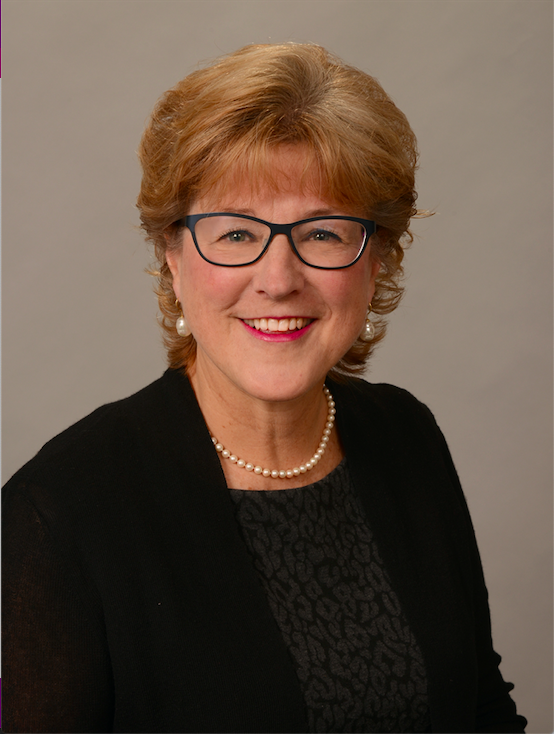Article
Boston Medical Center’s Shah: Nonclinical Factors Can Drive Value Equation in Multiple Myeloma
Author(s):
Bhavesh Shah, RPh, BCOP, associate chief pharmacy officer for Specialty and Hematology Pharmacy at Boston Medical Center (BMC), spoke with The American Journal of Managed Care® (AJMC®) about the several current issues in multiple myeloma, including the use of anti-CD38 agents and risk stratification of patients.
Bhavesh Shah, RPh, BCOP, is associate chief pharmacy officer for Specialty and Hematology Pharmacy at Boston Medical Center (BMC), where Shah joined the staff more than 21 years ago. The American Journal of Managed Care® (AJMC®) spoke with Shah about the several current issues in multiple myeloma, including the use of anti-CD38 agents and risk stratification of patients. This interview has been edited for clarity and length.
AJMC®: In the context of multiple myeloma, what is risk and how are patients stratified by risk?
Shah: Just to kind of level set for myeloma, there are approximately 28 FDA-approved treatments on the market. In regard to risk, risk is mainly defined as progression of disease. And there are multiple factors that determine the risk of progression that a patient may have. Practicing as long as I have in oncology, [I’ve seen] a revision of the International Staging System that combines all the elements that capture risk of progression, such as tumor burden and the biology of the disease, which is essentially the presence of high-risk-cell genic abnormalities. Then, of course, you have elevated lactate dehydrogenase. This essentially captures all of the elements that are used in regard to quantifying risk of progression for a patient.
Now, in the current treatment of myeloma landscape, we have a new risk factor, which is minimal residual disease–positive disease, which has really been incorporated, outside of clinical trials now, where many providers and experts are looking at that in quantifying risk of progression.
AJMC®: In your experience, how are anti-CD38 agents being used in high-risk patients?
Shah: If you ask me and then you ask 10 other pharmacists, you'll get probably 10 different answers. Essentially, you have your standard-risk myeloma patients and then your high-risk myeloma patients. In those with standard risk, the therapy for many centers is still VRD [Velcade (bortezomib)/Revlimid (lenalidomide)/dexamethasone], for 3 or 4 cycles. And depending whether [these patients] are transplant candidates, that determines how they're managed. With high-risk disease, still you have VRD, or now you have a quadruple therapy approach, which is reserved for your higher-risk patients—your double-hit/triple-hit myeloma patients. I think there's still controversy around that, where providers are not using [quadruple therapy] for all of their patients with high risk. I think they're being very selective because we're still waiting for overall survival data; we have so many active agents in myeloma, so [they may be asking], do we really need to use all 4 agents up front? It's really a controversy.
In regard to CD38, for both standard-risk and high-risk patients, more and more are getting a CD38-based regimen. There may be differences in practice where there are providers who still use—and it's appropriate to—VRD in that setting, too.
So, providers have multiple options. DRD [daratumumab/Revlimid/dexamethasone] has been well established in high-risk patients. More and more we are seeing CD38 being utilized for high-risk and standard-risk disease, but not quadruple regimen.
AJMC®: How are clinical pathways developed and used in multiple myeloma at BMC?
Shah: A lot of times there's confusion about pathways. There are pathways that you purchase from an organization, like a vendor that makes pathways, and then there are pathways that you create through your electronic medical record [EMR] in your institution.
We have our pathways incorporated into our EMR, which essentially drives prescribing. How are they developed? It's essentially based on national guidelines and expert provider feedback and formulary. Essentially, once a drug is on formulary, those pathways are built based on our internal experts weighing in in terms of what regimens they want to be incorporated in that pathway for first-line, second-line, third-line, therapy, etc. Of course, in myeloma, you have Nth-line of pathways, so it varies institution to institution. Most of the institutions will have their internally homegrown-developed pathways.
AJMC®: When there is a conflict between the institution pathway and the payer pathway, how does your institution resolve that?
Shah: We have not come across too many payers who have [an] overly restricted myeloma formulary, because myeloma is such a fast-paced disease in terms of change in treatment landscape. And payers are now more aware of combinations and are used to seeing combination therapy that we haven't seen roadblocks from payers that say, “Well, we prefer lenalidomide over pomalidomide,” or, “We prefer lenalidomide over bortezomib or daratumumab over isatuximab.”
We haven't seen any type of pathways restrictions from payers on myeloma-specific drugs. Even if a provider wanted to use pomalidomide instead of Revlimid for a VRD-based regimen, there's no restrictions from payers, that I'm aware of, where they are basically requiring you to fail or be refractory or relapsed after Revlimid to be on pomalidomide.
AJMC®: How does the presence of renal impairment impact treatment decisions in multiple myeloma, particularly with anti-CD38 therapy?
Shah: I think CD38 molecules are definitely kidney friendly vs some of the other myeloma agents. But I think there are also very good agents that work pretty well and are safe when it comes to the renal toxicity perspective. Velcade and CyBorD [cyclophosphamide/bortezomib/dexamethasone] have been around for a very long time. Even when you have a patient with acute nephrotoxicity, or renal failure, there's still significant benefit in response or time to response, whether they used Velcade or CyBorD or a CD38 agent.
Obviously, Revlimid is a drug that’s not preferred in patients with renal failure, so, I think that would drive a provider to maybe use a CD38 mixed with bortezomib or a proteasome inhibitor vs a lenalidomide combination for patients with kidney failure. But there's no preference of CD38 over a proteasome inhibitor for patients with renal dysfunction. I think that they're equally efficacious in providing [the] response that you need in those patients who present with renal failure or other renal complications.
AJMC®: Is there anything we didn't cover about the criteria that your institution uses to evaluate which patients would be eligible for quadruplet therapy?
Shah: I think high risk is probably the biggest criteria. I don't think that a provider would ever use a quadruplet therapy for somebody with standard risk. And even with high risk, I think there is still hesitation in doing that for everybody. There's still more data that we need long term, or overall survival data, before everybody starts using quadruple therapy.
AJMC®: Has prior authorization from payers been a barrier to the use of quadruplet therapy?
Shah: We have not run into any issues with prior authorization with quadruple therapy.
AJMC®: What are some of the nonclinical value considerations you evaluate in the use of anti-CD38 therapy (eg, cost, patient support programs)?
Shah: The patient satisfaction component is something that we consider from a nonclinical value consideration. A patient having to spend hours in a chair for an infusion vs getting a sub-Q shot and being able to go home, it's a huge value driver, a nonclinical value driver that needs to be taken into consideration.
There's also cost. We know that many times patients with Medicare will have a very high copay for an oral drug vs they will not have a high copay for an IV drug. So, I think that also sometimes needs to be taken into consideration, when patient affordability comes into play. And I would say from a patient support program perspective, most manufacturers have a very robust patient assistance program. I think that the challenges come through when you have oral drugs and they have Medicare, and there's not adequate funding there to support them.
Obviously, sometimes the income criteria are also not in favor of the patient. For instance, if you think about somebody who has an $80,000 household income, which may be the income criteria, and they have a $2000 copay, just because they have that income, doesn't mean that they can afford that $2000 copay on a monthly basis.
Essentially, those are the main nonvalue considerations that need to be considered.
And then, of course, thinking about logistics for patients. You have transportation issues. For oral drugs, especially during the COVID-19 pandemic, I think there was more favorability of using an all-oral regimen—such as ixazomib, Revlimid, or pomalidomide. And dexamethasone-based regimens were more frequently utilized vs the IVs, where you have to come into the clinic every week or every 2 weeks, depending on the regimen that you're on. So, there's definitely those considerations that also tie into efficiency, because oral-based regimens can also help with efficiency, even more than a sub-Q regimen.


